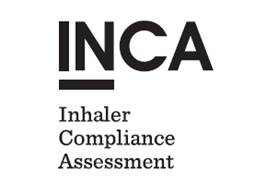Remotely Monitored Therapy and Nitric Oxide Suppression Identifies Non-Adherence in Severe Asthma
https://www.atsjournals.org/doi/10.1164/rccm.201806-1182OC
Digital technologies and adherence in respiratory diseases: the road ahead
http://erj.ersjournals.com/content/erj/52/5/1801147.full.pdf
Evaluation of criteria for clinical control in a prospective, international, multicenter study of patients with COPD
https://www.resmedjournal.com/article/S0954-6111(18)30028-3/fulltext
Eosinophils increase airway sensory nerve density in mice and in human asthma
http://stm.sciencemag.org/content/10/457/eaar8477
Personalising adherence-enhancing interventions using a smart inhaler in patients with COPD: an exploratory cost-effectiveness analysis
A novel statistical method for assessing effective adherence to medication and calculating optimal drug dosages.
https://www.ncbi.nlm.nih.gov/pubmed/29677197
Objective Assessment of Patient Inhaler User Technique Using an Audio-Based Classification Approach
Reduction in exhaled nitric oxide tracks improved patient inhaler compliance in difficult asthma–a case study
http://www.tandfonline.com/doi/full/10.1080/02770903.2017.1414237
A randomised clinical trial of feedback on inhaler adherence and technique in patients with severe uncontrolled asthma
http://erj.ersjournals.com/content/51/1/1701126
Colonisation of Irish patients with chronic obstructive pulmonary disease by Streptococcus pneumoniae and analysis of the pneumococcal vaccine coverage: a non-interventional, observational, prospective cohort study
http://bmjopen.bmj.com/content/7/7/e013944.full?ijkey=aaRqySpQukBpcBR&keytype=ref
In patients with severe uncontrolled asthma, does knowledge of adherence and inhaler technique using electronic monitoring improve clinical decision making? A protocol for a randomised controlled trial
http://bmjopen.bmj.com/content/bmjopen/7/6/e015367.full.pdf
Irregular and Ineffective: A Quantitative Observational Study of the Time and Technique of Inhaler Use
http://www.sciencedirect.com/science/article/pii/S2213219816302811
The Impact of Common Inhaler Errors on Drug Delivery: Investigating Critical Errors with a Dry Powder Inhaler
http://online.liebertpub.com/doi/abs/10.1089/jamp.2016.1334
Changing a hospital inhaler policy to improve in-hospital inhaler use
http://erj.ersjournals.com/content/44/Suppl_58/P3000.short
The INCA (Inhaler Compliance Assessment): A Comparison with established measures of adherence
http://www.tandfonline.com/doi/pdf/10.1080/08870446.2017.1290243?needAccess=true
P220 Determinants of inhaler adherence in a copd population
http://thorax.bmj.com/content/71/Suppl_3/A205.2
P152 Inhaled corticosteroid (ICS) and long acting beta-adrenoceptor agonist (LABA) therapy adherence reporting and monitoring in clinical trials of severe adult asthma drug treatments: a systematic review
http://thorax.bmj.com/content/71/Suppl_3/A165.3
P208 Behavioural feed-back education intervention to enhance adherence in patients with severe uncontrolled asthma, a randomised clinical trial
http://thorax.bmj.com/content/71/Suppl_3/A198.1
Characterization of patient inhaler inhalation sounds using non-contact and tracheal microphones
http://iopscience.iop.org/article/10.1088/2057-1976/2/5/055021
Changes in inhaler inhalation acoustic features during induced bronchoconstriction: A pilot study
http://ieeexplore.ieee.org/document/7591543/
Abstract: A new clinically relevant method of calculating adherence
http://erj.ersjournals.com/content/46/suppl_59/PA3932
Objective assessment of adherence to inhalers by COPD patients.
http://www.atsjournals.org/doi/pdf/10.1164/rccm.201604-0733OC
A protocol for a randomised clinical trial of the effect of providing feedback on inhaler technique and adherence from an electronic device in patients with poorly controlled severe asthma
http://bmjopen.bmj.com/content/6/1/e009350.full
The effect of providing feedback on inhaler technique and adherence from an electronic audio recording device, INCA®, in a community pharmacy setting: study protocol for a randomised controlled trial.
https://trialsjournal.biomedcentral.com/articles/10.1186/s13063-016-1362-9
A method to assess adherence in inhaler use through analysis of acoustic recordings of inhaler events
http://www.ncbi.nlm.nih.gov/pubmed/24905012
The Acoustic Features of Inhalation can be Used to Quantify Aerosol Delivery from a Diskus™ Dry Powder Inhaler.
http://link.springer.com/article/10.1007%2Fs11095-014-1371-x
Acoustic Analysis of Inhaler Sounds From Community-Dwelling Asthmatic Patients for Automatic Assessment of Adherence.
http://www.ncbi.nlm.nih.gov/pubmed/27170883
Using acoustics to estimate inspiratory flow rate and drug removed from a dry powder inhaler.
http://ieeexplore.ieee.org/xpl/abstractAuthors.jsp?arnumber=6611135
An acoustic method of automatically evaluating patient inhaler technique.
http://www.ncbi.nlm.nih.gov/pubmed/24109939
A Method to Calculate Adherence to Inhaled Therapy That Reflects the Changes in Clinical Features of Asthma
http://www.ncbi.nlm.nih.gov/pubmed/27467125
An acoustic method to automatically detect pressurized metered dose inhaler actuations.
http://www.ncbi.nlm.nih.gov/pubmed/25571019
An Acoustic-Based Method to Detect and Quantify the Effect of Exhalation into a Dry Powder Inhaler.
http://www.ncbi.nlm.nih.gov/pubmed/25393346
A method of estimating inspiratory flow rate and volume from an inhaler using acoustic measurements.
http://www.ncbi.nlm.nih.gov/pubmed/23892977
Predicting asthma exacerbations employing remotely monitored adherence.
Automatic identification and accurate temporal detection of inhalations in asthma inhaler recordings.
http://www.ncbi.nlm.nih.gov/pubmed/23366456
Investigating the relationship between peak inspiratory flow rate and volume of inhalation from a Diskus™ Inhaler and baseline spirometric parameters: a cross-sectional study.
http://www.ncbi.nlm.nih.gov/pubmed/25279290
In vitro correlation of inhalational acoustics from a Dry Powder Inhaler with drug delivery.
http://www.atsjournals.org/doi/pdf/10.1164/ajrccm-conference.2014.189.1_MeetingAbstracts.A5688
Monitoring Inhaler Inhalations Using an Acoustic Sensor Proximal to Inhaler Devices.
http://www.ncbi.nlm.nih.gov/pubmed/26859629
Influences of gender and anthropometric features on inspiratory inhaler acoustics and peak inspiratory flow rate.
http://www.ncbi.nlm.nih.gov/pubmed/26736734
A nurse-led intervention study: Promoting compliance with Diskus Inhaler use in asthma patients.




